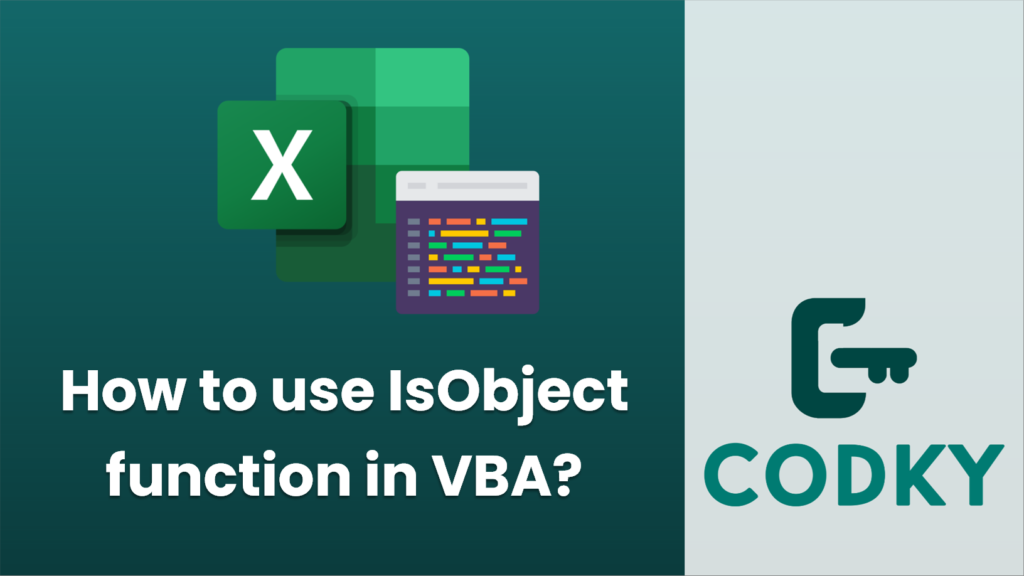
The `IsObject` function in VBA (Visual Basic for Applications) is used to determine if a variable is an object type. The purpose of the `IsObject` function is to avoid run-time errors that might occur if you try to perform an object-specific operation on a non-object.
Here is how you can use the `IsObject` function in VBA:
Sub CheckIfObject()
Dim potentiallyAnObject As Variant
Dim regularVariable As Integer
' Assign a new Collection (which is an object) to the variant
Set potentiallyAnObject = New Collection
' Check if potentiallyAnObject is an Object
If IsObject(potentiallyAnObject) Then
MsgBox "potentiallyAnObject is an object"
Else
MsgBox "potentiallyAnObject is not an object"
End If
' regularVariable is not an object, it's an integer
regularVariable = 10
If Not IsObject(regularVariable) Then
MsgBox "regularVariable is not an object"
End If
End Sub
- Open the VBA editor by pressing `ALT+F11` in Excel, Word, or any other VBA-hosting application.
- Insert a new module or use an existing one to write your VBA code.
- Type a subroutine or function, where you would like to check if a variable is an object. Example:
What is happening here:
- We declare two variables, `potentiallyAnObject` as `Variant` which can hold both object and non-object types and `regularVariable` as `Integer` which can hold numbers.
- We create a `New Collection` (a collection is a type of object in VBA) and assign it to the `potentiallyAnObject` variable.
- We then use `IsObject` to check if `potentiallyAnObject` is indeed an object. Since we have assigned a `Collection` object to it, the message box will confirm that it is an object.
- For the `regularVariable`, which is not an object, `IsObject` will return `False`.
You can call the subroutine `CheckIfObject` by pressing `F5` while in the editor or by attaching it to a button or event in your application.
Remember that `IsObject` only checks if the variable is an object; it does not verify the type of the object. If you need to ensure that an object is of a specific type, you would need to use `TypeName` or `TypeOf`.






